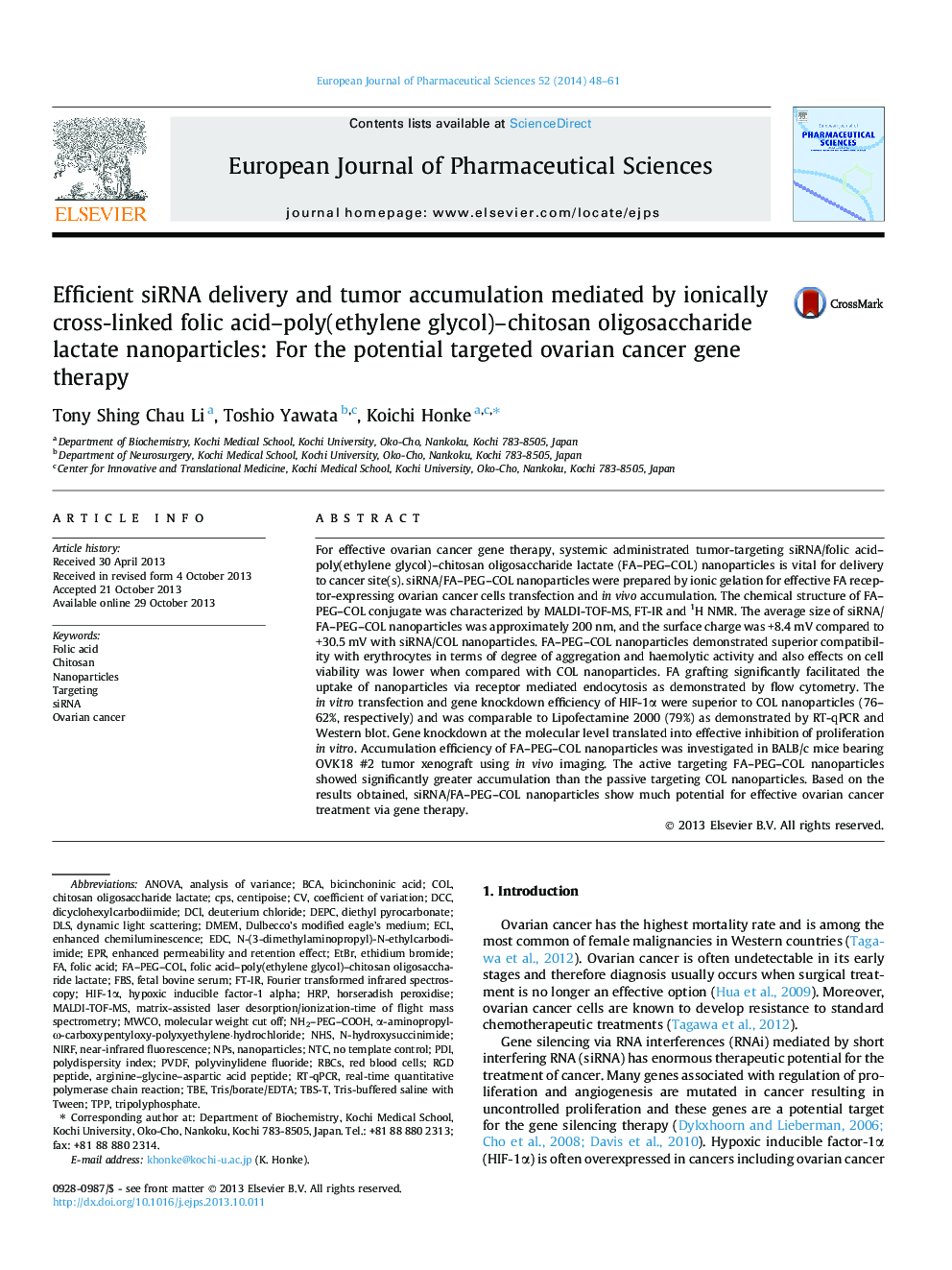| کد مقاله | کد نشریه | سال انتشار | مقاله انگلیسی | نسخه تمام متن |
|---|---|---|---|---|
| 2480654 | 1556198 | 2014 | 14 صفحه PDF | دانلود رایگان |

For effective ovarian cancer gene therapy, systemic administrated tumor-targeting siRNA/folic acid–poly(ethylene glycol)–chitosan oligosaccharide lactate (FA–PEG–COL) nanoparticles is vital for delivery to cancer site(s). siRNA/FA–PEG–COL nanoparticles were prepared by ionic gelation for effective FA receptor-expressing ovarian cancer cells transfection and in vivo accumulation. The chemical structure of FA–PEG–COL conjugate was characterized by MALDI-TOF-MS, FT-IR and 1H NMR. The average size of siRNA/FA–PEG–COL nanoparticles was approximately 200 nm, and the surface charge was +8.4 mV compared to +30.5 mV with siRNA/COL nanoparticles. FA–PEG–COL nanoparticles demonstrated superior compatibility with erythrocytes in terms of degree of aggregation and haemolytic activity and also effects on cell viability was lower when compared with COL nanoparticles. FA grafting significantly facilitated the uptake of nanoparticles via receptor mediated endocytosis as demonstrated by flow cytometry. The in vitro transfection and gene knockdown efficiency of HIF-1α were superior to COL nanoparticles (76–62%, respectively) and was comparable to Lipofectamine 2000 (79%) as demonstrated by RT-qPCR and Western blot. Gene knockdown at the molecular level translated into effective inhibition of proliferation in vitro. Accumulation efficiency of FA–PEG–COL nanoparticles was investigated in BALB/c mice bearing OVK18 #2 tumor xenograft using in vivo imaging. The active targeting FA–PEG–COL nanoparticles showed significantly greater accumulation than the passive targeting COL nanoparticles. Based on the results obtained, siRNA/FA–PEG–COL nanoparticles show much potential for effective ovarian cancer treatment via gene therapy.
Figure optionsDownload high-quality image (216 K)Download as PowerPoint slide
Journal: European Journal of Pharmaceutical Sciences - Volume 52, 14 February 2014, Pages 48–61